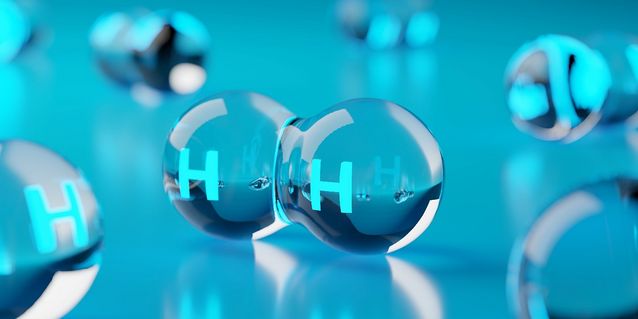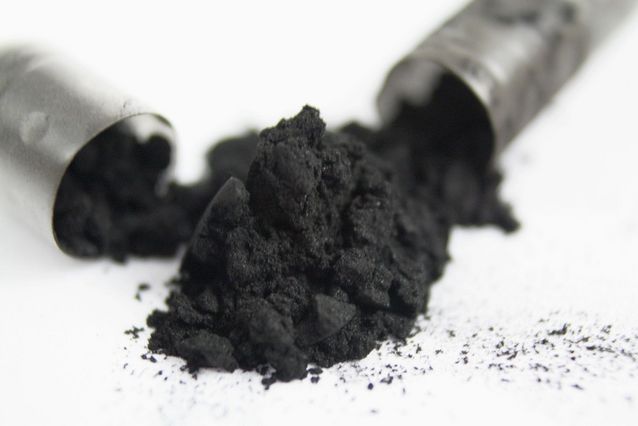
We must shift our focus away from discussing green, blue and turquoise hydrogen (H₂) and instead concentrate on the full greenhouse gas (GHG) emissions lifecycle of hydrogen production. In the United States, the technology-neutral approach to hydrogen yields more fruit than the approach used in Europe. In addition to hydrogen, we need carbon capture regulations to speed up the development of the synthetic fuel industry.
The Czech Republic – as the presidency of the Council of the EU – has added an article to the draft of the Renewable Energy Directive suggesting that low-carbon hydrogen can be used to meet mandated H₂ targets for the industry and transport sectors by 2030. Low-carbon hydrogen is H₂ produced with life cycle GHG emissions lower than 3kg/kg H₂. One way to achieve this is using nuclear energy or methane with carbon capture, utilisation and storage (CCUS) technologies.
This is an essential step in the right direction. We need to slow climate change, and to do that; we must use all available tools – including low-carbon hydrogen.
The Czech proposal came after Germany and France, which have opposing positions regarding nuclear power, set aside their differences on hydrogen regulation, allowing the EU to move forward. At the end of November, the German Minister of Economics, Robert Habeck, and his French counterpart, Bruno Le Maire, announced an agreement and closer cooperation on hydrogen technology. [1]
Despite these developments, the EU is still advancing too slowly. We may have to wait until 2024 for the EU to determine its definition of low-carbon hydrogen. [2] As long as the regulatory framework remains unclear, investors must continue to wait.

IRA makes US industry greener
Meanwhile, US investors are already beginning to pour their money into new hydrogen and other green technology that will help to cut emissions. The Inflation Reduction Act (IRA), passed in the US in August 2022 and in effect on 1 January 2023, has caused a surge of investment in hydrogen because it is generous, technology-neutral and, foremost, very clear.
Among other funds, the IRA allocates USD 370 billion dollars (approximately EUR 357 billion) to the US Department of Energy (DoE) to provide credit subsidies for direct loans and loan guarantees for climate protection and energy security. [3]
The IRA also provides subsidies for electric vehicles, batteries and US-made renewable energy projects. Companies using US products or manufacturing in the US are eligible for subsidies and tax credits. [4]
Hydrogen investors go to America
Since the beginning of the Russian invasion of Ukraine, the cost of hydrogen produced with traditional steam-methane reforming (SMR) technology has become equal to that of clean hydrogen, at around USD 5/kg (€4.8/kg) in Europe.
With the enactment of the IRA, US support for the hydrogen industry has reached over USD 50 billion. It grants companies a guaranteed payment for a period of ten years.
The IRA contains two provisions subsidising emission-free hydrogen production. The first is a massive tax credit of USD 3/kg to produce zero-emission hydrogen (<0.45 CO2eq). The value of the credit is based on the full GHG life cycle emissions. The second is a substantial increase in the value of the existing tax credit for carbon sequestration.
The US move has driven the cost of new zero-emission hydrogen products below USD 2/kg. Emission-free hydrogen has become too cheap to ignore in America.
I have recently been discussing this with business decision-makers in Europe and elsewhere, and their message is clear. US companies have started to move to secure capacity on a large scale. If the EU does not act fast, it will end up empty-handed.
Werner Diwald, Chairman of the Board of the German Hydrogen and Fuel Cell Association (DWV) formulated this frankly in his recent interview for Berliner Zeitung. “We have information from the first companies that have stopped their plans for Europe and want to go to the USA.” It is a matter of days. “Companies are going where they have investment security. The race starts now.” [5]

US hydrogen producers demonstrate low life cycle emissions
Resources for the Future (RFF) recently published an excellent report about the IRA and hydrogen. [6] RFF is an independent, nonprofit research institution in Washington, DC.
RFF explains that both forms of hydrogen production – electrolysis and the use of methane with CCUS technologies – are potentially eligible for the IRA tax credit, but they must demonstrate low life cycle emissions to qualify. The magnitude of the credit depends on the level of emissions. Excluding direct emissions, upstream methane leakage is the most significant component of the life cycle emissions for fossil-fuel-based production. In the case of electrolysis, the emissions associated with electricity production are the most significant.
The US Department of the Treasury will define how to calculate these life cycle emissions, which will considerably impact the subsidies available to hydrogen producers and the competitiveness of various forms of hydrogen production.
According to the analysis by RFF, the tax credit is significant enough to make some forms of fossil fuel-based hydrogen production competitive with current high-emission production on a levelized cost basis. On the other hand, the high cost of grid electricity and the associated emissions make it hard for electrolysis to compete. However, electrolysers that source cleaner and cheaper electricity can qualify for high levels of tax credits and consequently, can compete with fossil-fuel-based hydrogen production. Ultimately, the grid should become less carbon-intensive, and the costs of electrolysers are expected to decrease, making electrolysers competitive more broadly.

Europe is not using money wisely
At least Habeck and Le Maire acknowledged in Paris in November that Europe must do much better now that the US has enacted the IRA.
The issue is not that Europe lacks action on solving the energy challenges, but rather whether the money is being used wisely.
Since the start of the energy crisis, EU countries have allocated EUR 574 billion to protect consumers from rising energy costs. Germany alone is contributing EUR 264 billion. If that investment went toward supporting new energy technologies, Europe’s position regarding energy and climate change challenges could be much stronger in a matter of a few years.
Europe needs low-carbon hydrogen
The EU should also follow the lead of the US regarding technology neutrality. In late November, dozens of European companies in the hydrogen industry drafted an open letter to the Commission and the EU member state governments expressing support for the new Czech amendment. [7] According to these companies, both renewable and low-carbon hydrogen are necessary to achieve the 2030 climate targets and the EU’s goal of carbon neutrality by 2050.
“The challenge is too significant, and the energy systems within the EU are too diverse, to rely on a unique primary energy source, in this case, renewable energy. The REpowerEU’s 2030 objective of 10 million tons (Mt) of clean hydrogen production in the EU would require +550 TWh of low-carbon electricity. This would translate into about 420 GW of new solar dedicated capacity, or 165 GW of offshore wind if we rely on renewables only, which is both extremely challenging to achieve and raises a risk of competition with direct electrification”, the writers state.
Companies advise that recognising the potential of low-carbon hydrogen and its complementarity with renewable hydrogen would reduce the overall cost of hydrogen produced in the EU and more quickly deliver larger volumes.
The writers underline, “Many projects are waiting for final investment decision and could contribute to delivering a more decarbonised and more secure energy supply”.
No beauty contests
The EU can also learn from the US about the type of support to provide for new technology. Because the IRA provides everyone with the same opportunity to do business, the EU often sets up its own operation for these “beauty contests”. They result in a few cases of business, but nothing on a large scale. In addition, winners of these bids can later compete against others once they have secured cheap facilities.

Carbon capture also needs regulations
Hydrogen production is not the only field where a new regulatory framework is needed. Clear rules for carbon capture are necessary because carbon capture will provide a vital raw material source for synthetic fuels and e-chemicals.
The emerging sustainable hydrogen industry is much more than pure hydrogen production. Recent news about billions of euros worth of investments by Finland and Sweden shows a straightforward way toward hydrogen derivatives.
Investors have recently announced several significant projects around the Gulf of Bothnia in the Baltic Sea. Some of the largest are Flexens in Kokkola (ammonia in addition to hydrogen, announced value EUR 500 million), Green North Energy in Naantali (ammonia, EUR 250 million), Koppö Energy in Kristiinankaupunki (methane, EUR 450 million), P2X Solutions in Harjavalta (methane, first phase EUR 70 million), Fertiberia in Luleå (ammonia, EUR 1 billion), FlagshipONE in Örnsköldsvik (methanol, 50 000 tonnes per year), FlagshipTWO in Sundsvall (methanol, 100 000 tonnes per year), LanzaJet in Forsmark (synthetic aviation fuel, 50 000 tonnes) and SkyFuelH2 in Sollefteå (synthetic aviation fuel). This list is growing rapidly, and many similar projects are forthcoming elsewhere in the Nordic Countries.
With synthetic fuels, the green transition is offering us exceptionally strong business potential. Now, it is up to the EU to turn this potential into a reality.
[1] https://cefic.org/app/uploads/2022/11/Open-letter-of-the-EU-industry-calling-for-optional-eligibility-of-low-carbon-hydrogen-to-the-hydrogen-targets.pdf
[2] https://www.rff.org/publications/reports/incentives-for-clean-hydrogen-production-in-the-inflation-reduction-act/
[3] https://www.mckinsey.com/industries/public-and-social-sector/our-insights/the-inflation-reduction-act-heres-whats-in-it
[4] https://www.spiegel.de/wirtschaft/usa-joe-biden-verteidigt-subventionsgesetz-gegen-kritik-von-emmanuel-macron-a-aa2f8003-6938-440f-b410-6ede964bb74b
[5] https://www.berliner-zeitung.de/wirtschaft-verantwortung/vergeigt-deutschland-seinen-vorsprung-bei-gruenem-wasserstoff-li.293441
[6] https://www.tagesschau.de/wirtschaft/weltwirtschaft/deutschland-frankreich-zusammenarbeit-schluesseltechnologien-101.html
[7] https://www.globalcompliancenews.com/2022/01/18/eu-proposals-related-to-the-new-eu-gas-package-03012022/
